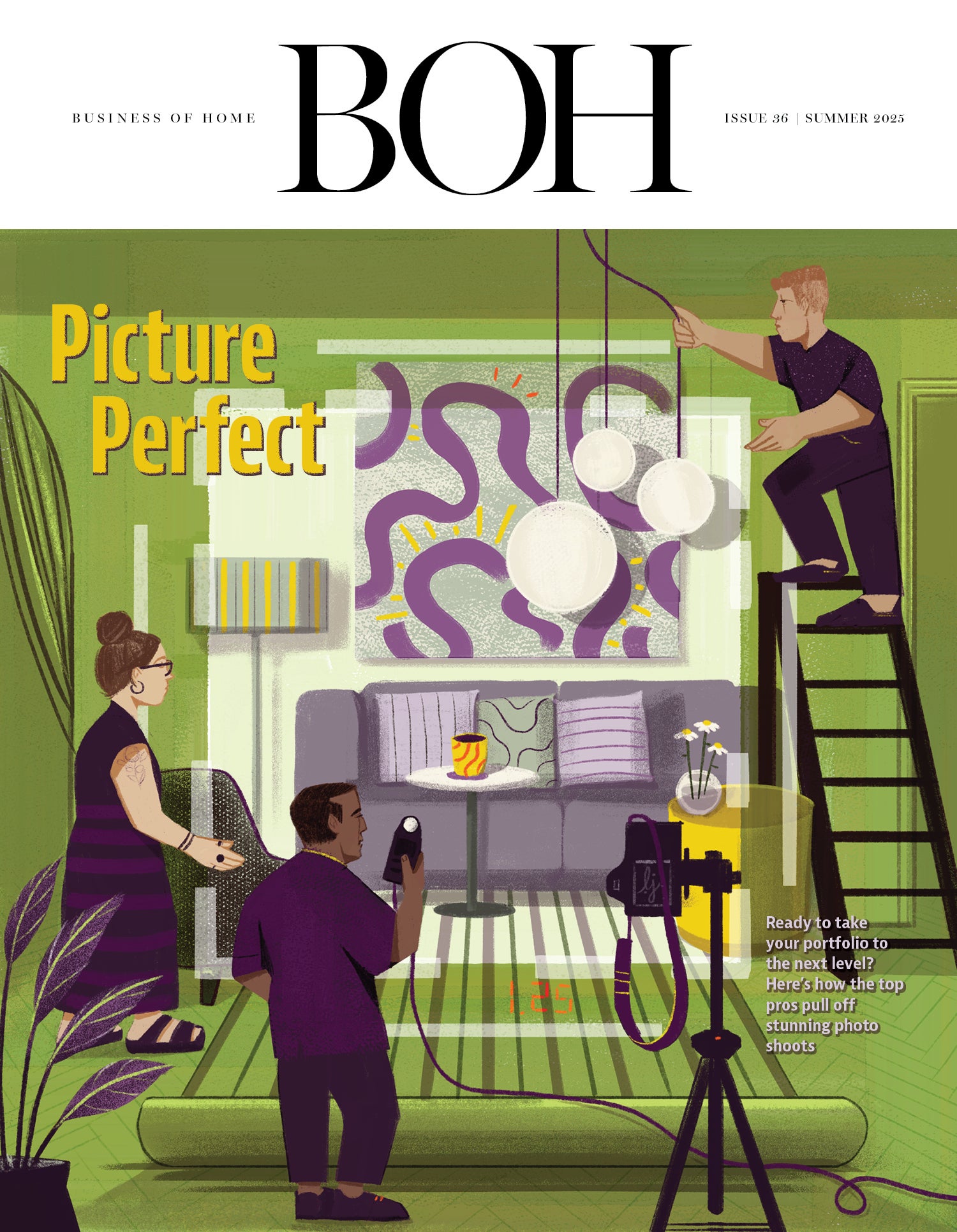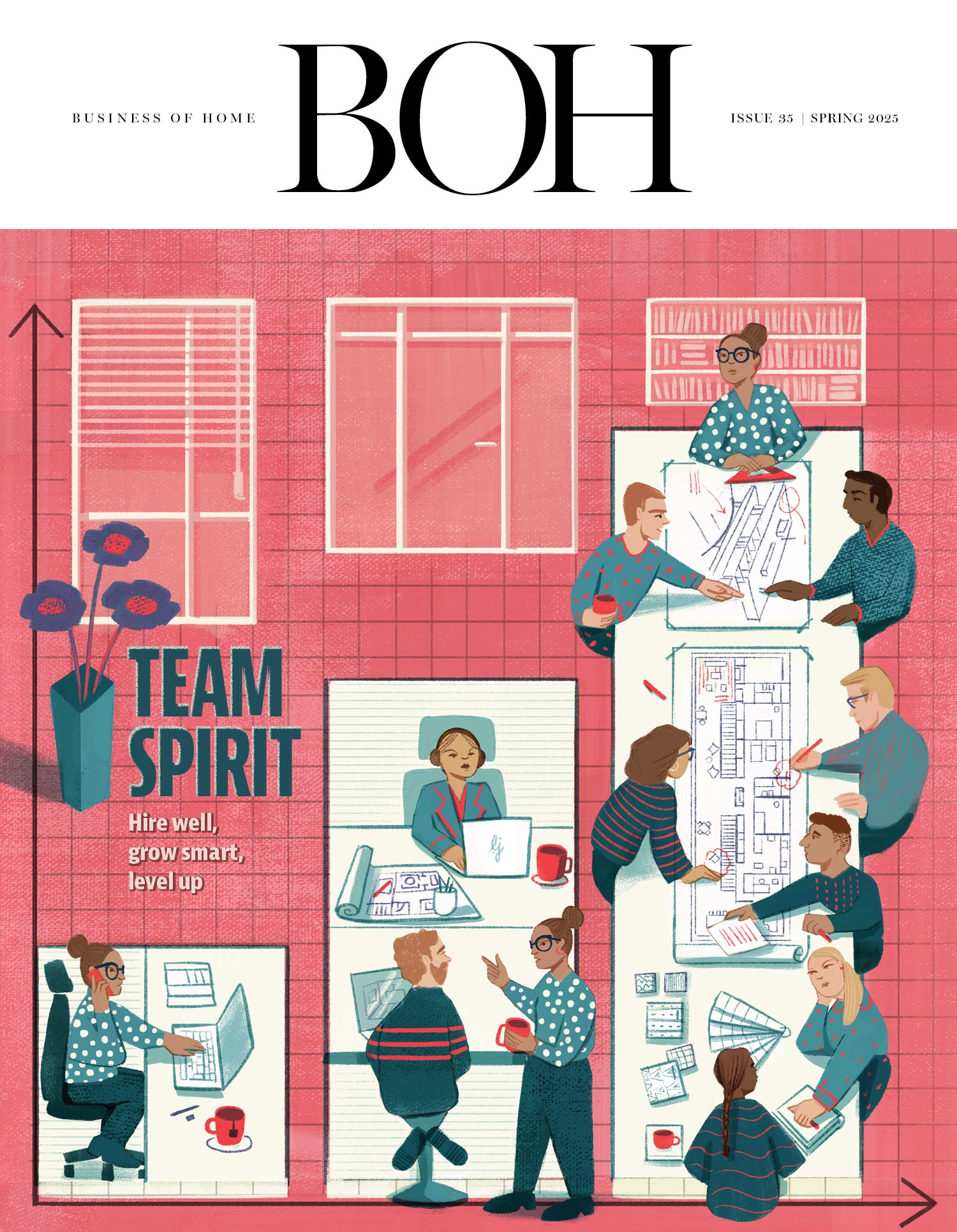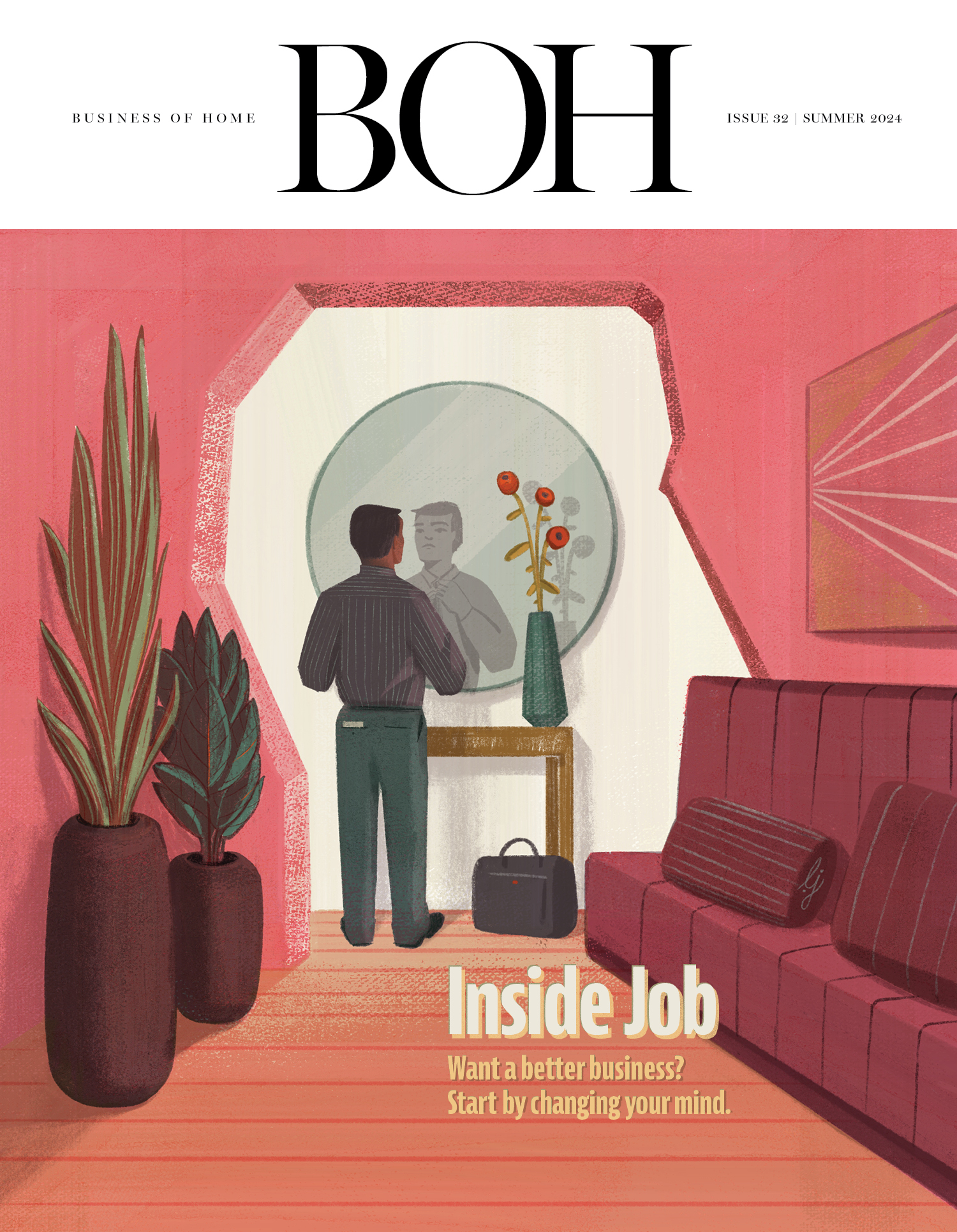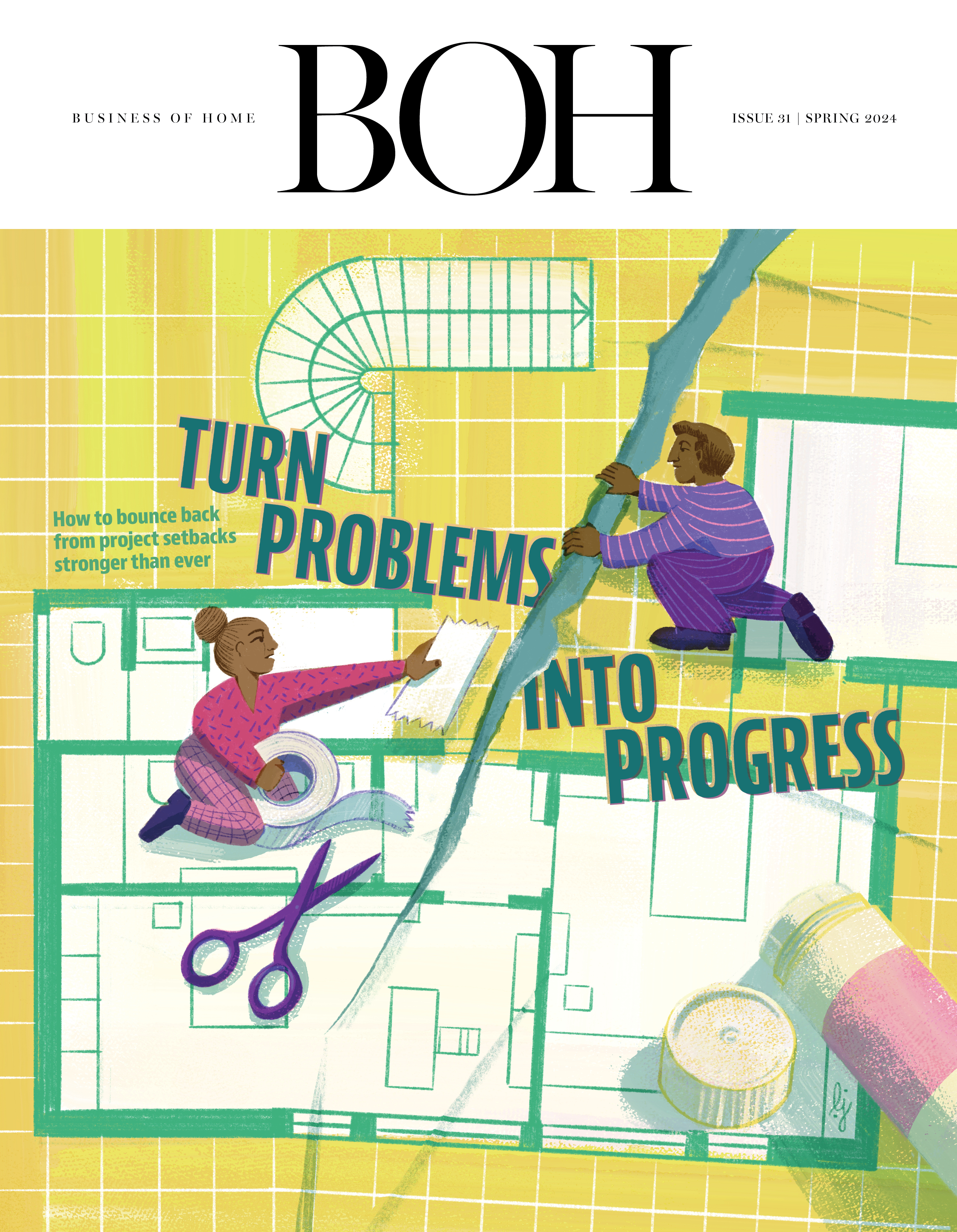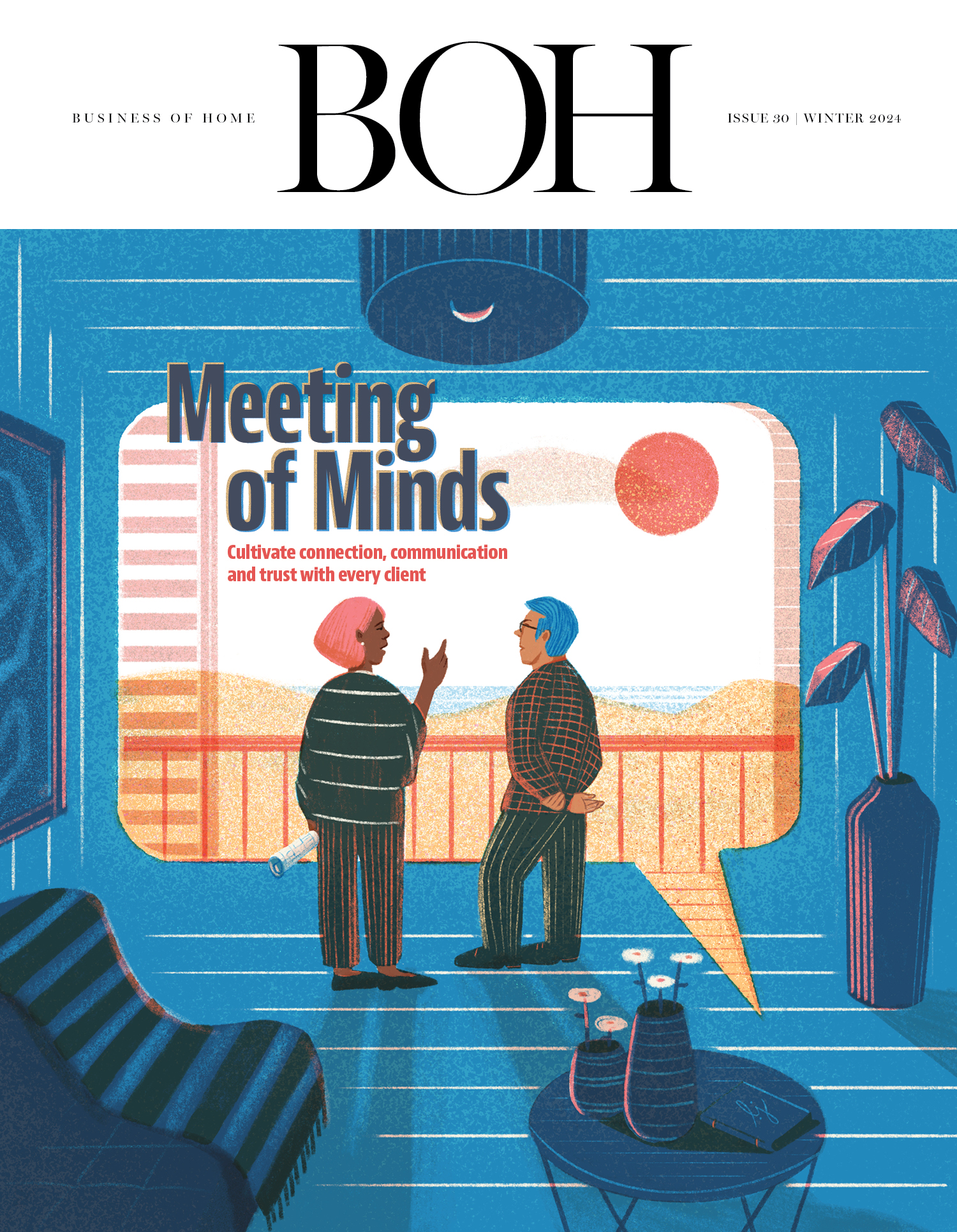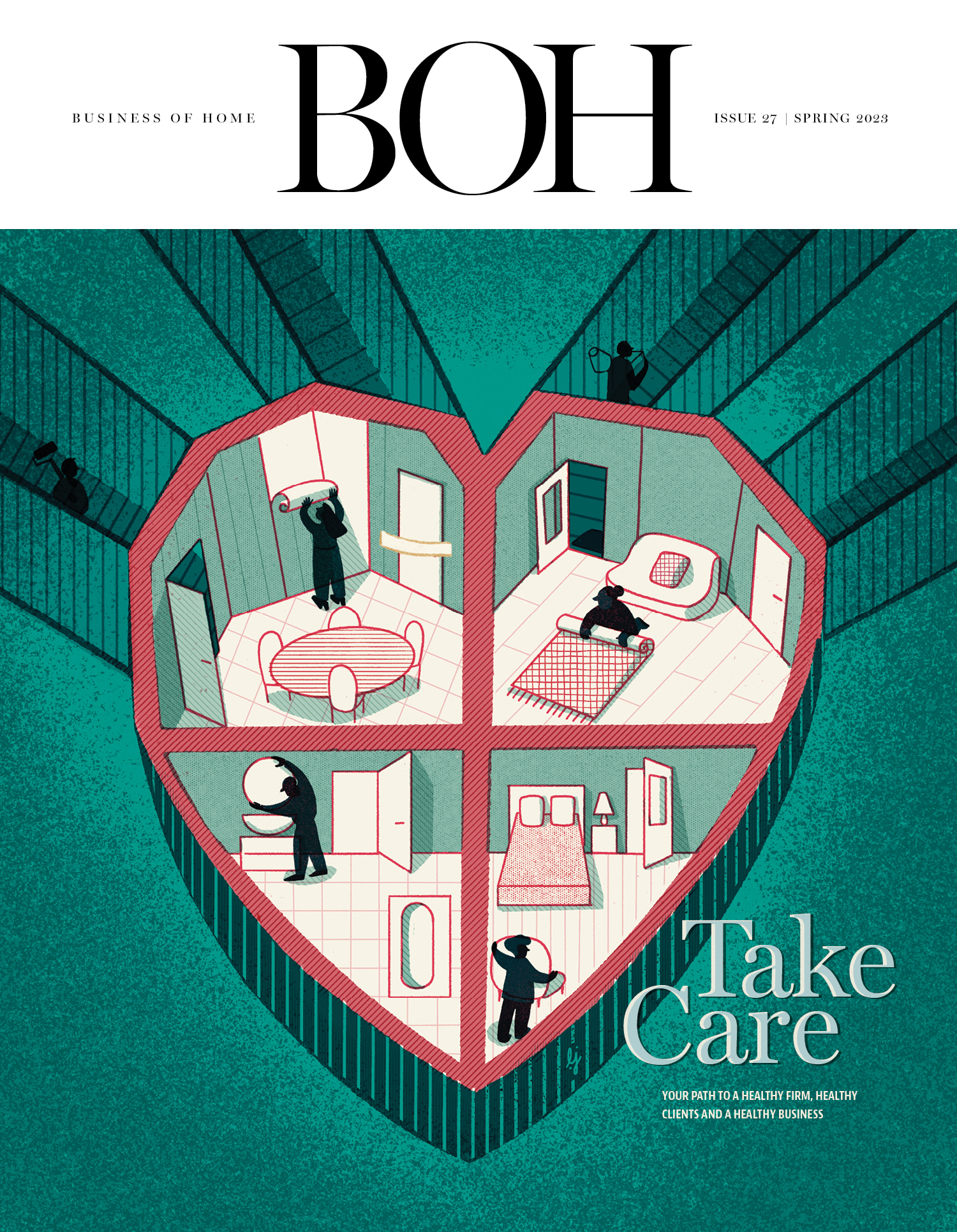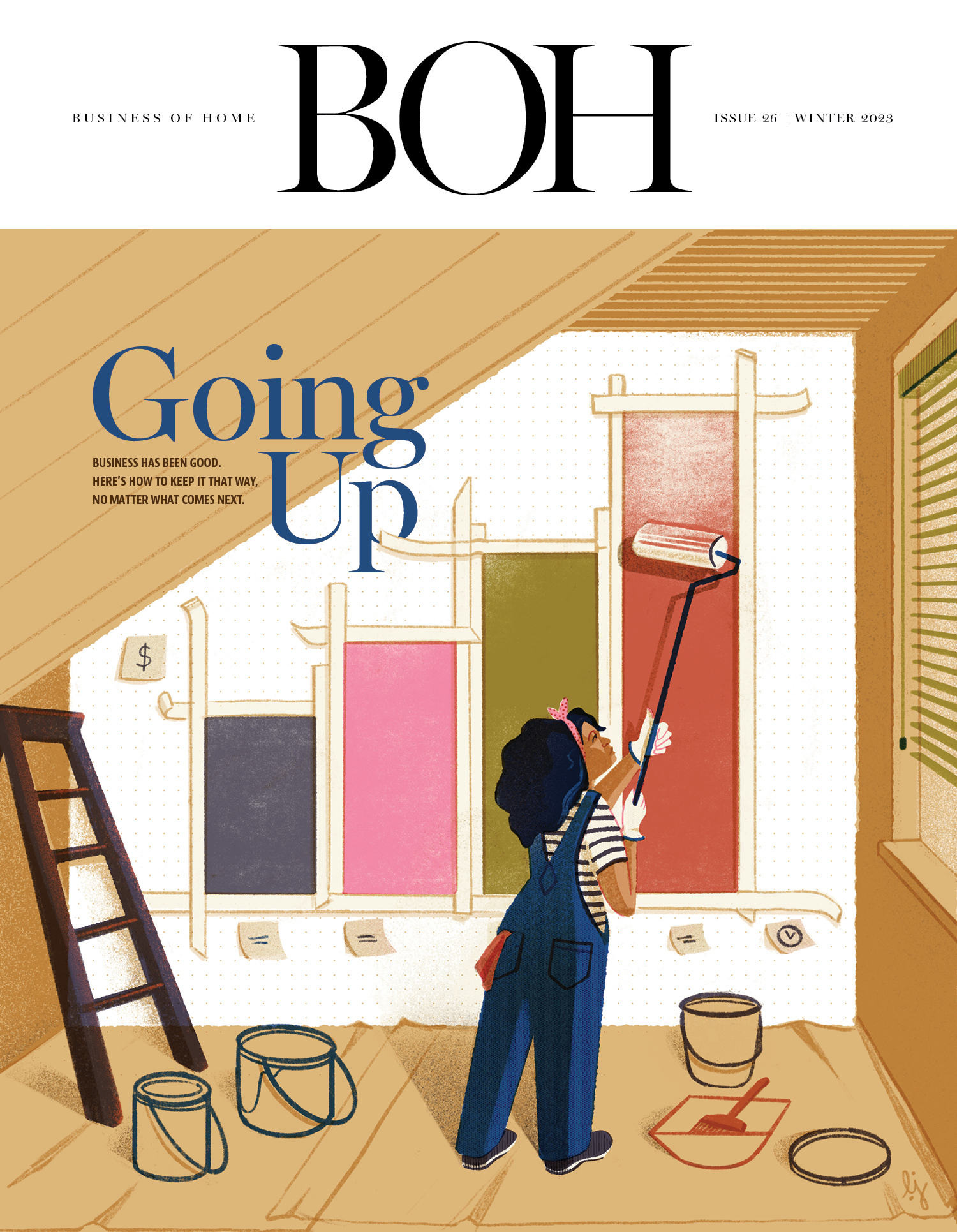Dear Sean,
We are a small firm focused on luxury residential design. While we are always looking to “level up” with better clients, I have no desire to sell product or become a “brand.” I just wanted to focus on designing the projects we take on.
I have heard you talk about the three-legged stool for designers—design, lifestyle and product—and I’m wondering how that applies to businesses like mine. What does it mean for designers who don’t want to grow their firms in all of the conventional ways?
Growing Pains
Dear Growing Pains,
Before we jump into the three-legged stool, a note about growth and expansion: Growth can be about getting more of the same (i.e., taking on more projects like the ones you currently have) or about executing the same number of projects, just bigger. Expansion is about moving past your core design business (i.e., licensing, styling, maybe even a retail store).
In a perfect world, maybe you could accomplish all three of these areas at once: more projects, bigger projects and new business lines. But a better strategy is to pick a lane that matters most to you, allowing the other areas to remain stable (or on hold) until you are ready to tackle them wholeheartedly. For most designers, that means digging deeper holes.
The firm that does five projects a year is not in the same business as the one that does 12. The intimate promises made by a small firm undertaking a large project require exponentially more infrastructure as project volume increases. This means more staff, more supervision, more specific frameworks and processes to sustain the same level of quality delivered when there are only five projects as when there are 12. Of course, it is possible and often necessary to increase the volume of projects a firm undertakes. However, getting ever better at the five projects you currently focus on each year is also a very important strategy. This is where the three-legged stool comes in.
All design is about honoring the power of the three-legged stool. Product can be decor, interior architecture or any other element related to your project. Design is about what product works best and how it functions in telling the story of the home and the people living in it. Lifestyle is your lens and how you relate to it all. An example of the three-legged stool: Vicente Wolf is voracious in understanding and collecting elements from around the globe (product). His projects incorporate elements from his travels to tell the story of how he sees the home and the people who will live there (design). As a result, he is famous for crossing boundaries by bringing a global perspective to all of his projects (lifestyle).
The aim is to incorporate each leg of the stool into every design conversation you have with your clients so as to convey the breadth of your vision, talent, wisdom and experience. It will bring more gravitas to what you are doing and, without question, the ability to “level up” as you seek to do—or to dig a deeper hole, if you will.
When designers get busy or distracted, they tend to focus on only one leg, to the detriment of the other two. That is fine, but limiting. Focusing too much on why you love the couch itself makes it all too easy to ignore why that couch is there in the first place—the context that elevates you beyond someone with mere good taste into an artist with a bigger vision. The cure is knowing the couch is beautiful, relevant and symbolic of a desired outcome: simultaneously what it is and bigger than itself, as all art is. Those are the deeper layers the three-legged stool forces you to contemplate and communicate at all times.
Last, expansion. For those who seek to go beyond their core design business, which you do not currently, that will, without question, require focusing on one leg of the stool. However, to make that focus work, the stool will need to be what it is, as there are too many competitors in each area with far more resources to allow access without the power of the stool behind it. Fashion is a fantastic reference: Ready-to-wear exists because of the power of couture. Same for designers. The more each leg of the stool is front of mind independently and in connection with the others, the better the opportunity to focus on each one individually.
The truth of the matter is that digging deeper holes by focusing on the three-legged stool will offer other opportunities far more than just digging more holes ever will. Clarity reaps its own rewards.
____________
Sean Low is the go-to business coach for interior designers. His clients have included Nate Berkus, Sawyer Berson, Vicente Wolf, Barry Dixon, Kevin Isbell and McGrath II. Low earned his law degree from the University of Pennsylvania, and as founder-president of The Business of Being Creative, he has long consulted for design businesses. In his Business Advice column for BOH, he answers designers’ most pressing questions. Have a dilemma? Send us an email—and don’t worry, we can keep your details anonymous.




